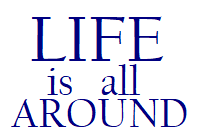There are times that we want to be creative but end up doing or thinking the same thing. Such behavior is logical to happen. However, no matter how difficult it may seem, there are techniques that we can use to force creativity. One such method is asking yourself What-If questions.
What are What-If questions
What-If questions are hypothetical scenarios that you create and imagine happening in real life. Once you do that, you ask yourself what would happen if that scenario were the reality.
The question starts with “What if”. For example, you can ask: “What if the work shift was 2 hours per day instead of 8?”. “What if we could live only up to 30 years old?”. “What if we did not need to sleep?”.
After you ask the question, the fun part starts. It is now time to give an answer to the best of your abilities. Apart from the fun, lots of creative thoughts or ideas may come up.
Why does it work?
Once you make a What-If question, you essentially break an assumption you have long held. The belief you break may be objectively true, such as the importance of sleep, or can be a social construction, such as the 8-hour shift.
Regardless, you do not need to consider whether the assumption you break is true or untrue. The goal of this technique is to help you think outside the box.
To continue the analogy, you can imagine living in a box with thousands of borders rather than the typical six sides every rectangular box has. The border is an assumption you have made about the world. Once you break an assumption, you essentially think out of the box.
The magic of breaking assumptions
The more assumptions you break, the more creative you can be. It is no coincidence that some great business ideas happen when two or more assumptions collapse. In other words, when the rest of society thinks one way, you see beyond that. Then, you have the potential to change how the world thinks or behaves.
For example, Apple enjoyed enormous growth when it realized there was no need to have two separate devices for calling and listening to music. At the same time, they did not limit the phone capacities to only listening to music. By breaking a few assumptions the market had made, Apple dreamed of the future smartphone.
The innovations that come from breaking assumptions do not necessarily need to create a new business. They could bring anything from a new recipe to a fundamental life change or shift in your perspective. More importantly, the process of asking What-If questions can make you aware of assumptions that you unconsciously hold.
Takeaway:
- What-If questions are hypothetical scenarios that you create and try to imagine happening in real life.
- Once you make a What-If question, you are essentially breaking an assumption you have long held. The more assumptions you break, the more creative you can be.
- Apart from the creativity boost, the process of asking What-If questions can make you aware of assumptions that you unconsciously hold



